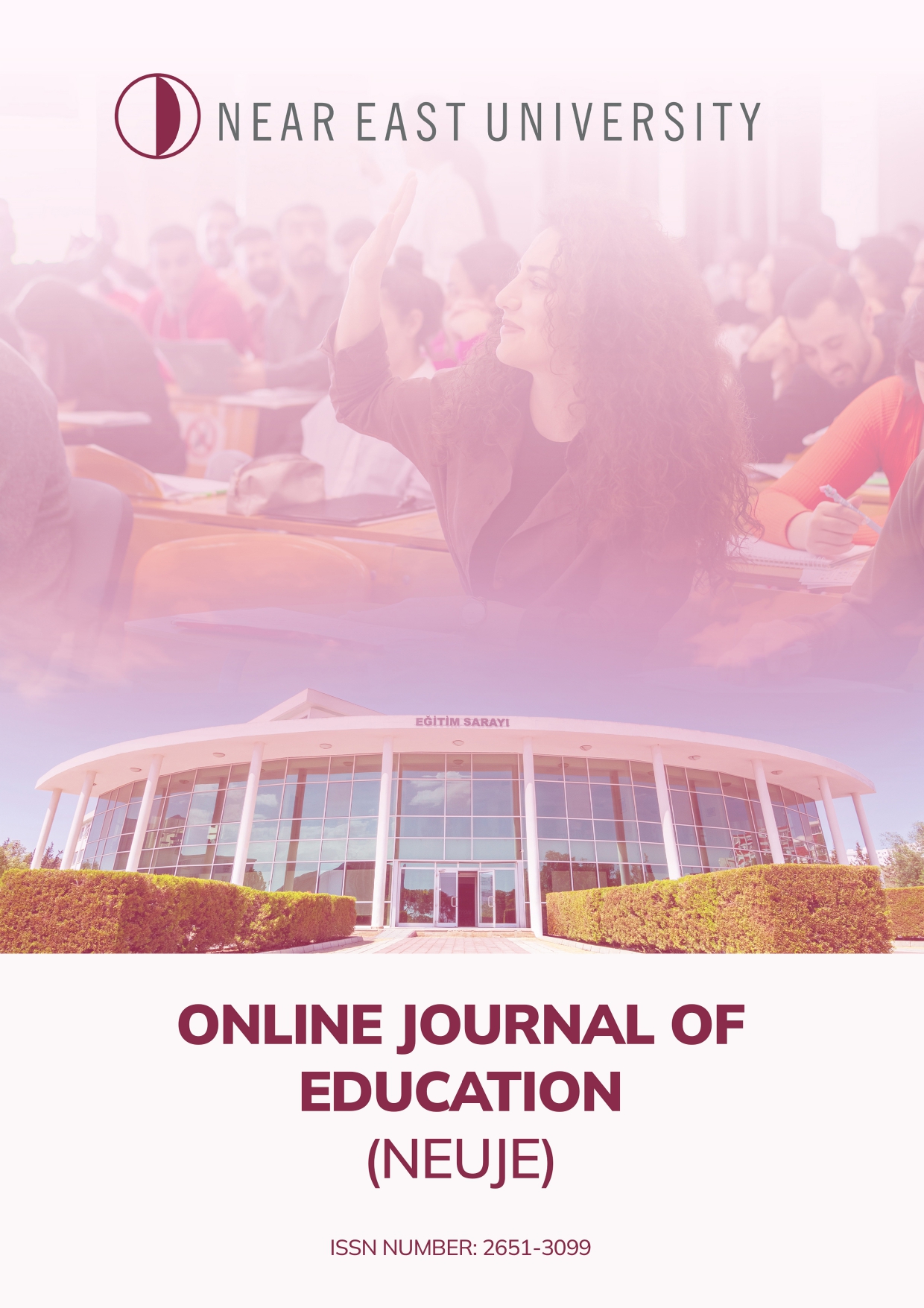FLIPPED CLASSROOM IN LANGUAGE STUDIES: A CONTENT ANALYSIS OF RECENT ARTICLES
DOI:
https://doi.org/10.32955/neuje.v1i1.52Keywords:
flipped classroom, inverted classroom technology, education, content-analysisAbstract
The concept of the flipped or inverted classroom has become a growing technological advancement in the field of instructional education. It is a growing instructional approach, also known as a pedagogical approach in which the standard, or the conventional pattern of classroom is altered. The traditional and commonly known approach is reversed by providing the instructional contents to the students outside the boundaries of the classroom. The actual classroom is replaced by videos of course contents to be watched at home by students while the students converge in the classroom for activities that help ingrain the learnt concepts. Lately, quite a lot of studies have been conducted on the flipped classroom in different subjects of study. In this research, we will evaluate the significance of the flipped classroom based on its application to language studies and learning. A total of 20 papers were carefully selected from this field and thoroughly examined for the purpose of the research. It was concluded that the flipped classroom has gained major significance in several fields of study including hands-on fields like medicine, nursing and engineering. This research is a comprehensive pilot to instructors and researchers alike in the quickly growing field of flipped classroom.
Keywords: flipped classroom, inverted classroom technology, education, content-analysis
References
Alsowat, H. (2016). An EFL flipped classroom teaching model: Effects on English language higher-order thinking skills, student engagement and satisfaction. Journal of Education and Practice, 7(9), 14
Asıksoy, G., & Ozdamlı, F. (2016). Flipped Classroom adapted to the ARCS Model of Motivation and applied to a Physics Course. Eurasia Journal of Mathematics, Science and Technology Education, 12(6), 1589-1603. doi: http://10.12973/eurasia.2016.1251
Avci, Z. Y., Vasu, E. S., Oliver, K., Keene, K. A., & Fusarelli, B. (2014). Utilization of online technologies in mathematical problem solving at high school level: Student and teacher perceptions. World Journal on Educational Technology, 6(2), 203-217
Basal, A. (2015). The implementation of a flipped classroom in foreign language teaching (Vol. 16).
Chen Hsieh, J. S., Wu, W.-C. V., & Marek, M. W. (2017). Using the flipped classroom to enhance EFL learning. Computer Assisted Language Learning, 30(1-2), 1-21. doi: http://10.1080/09588221.2015.1111910
Chilingaryan, K., & Zvereva, E. (2016). Methodology of flipped classroom as a learning technology in foreign language teaching.
Correa, M. (2015). Flipping the foreign language classroom and critical pedagogies: A (New) Old Trend (Vol. 2).
Doman, E., & Webb, M. (2016). The Flipped Experience for Chinese University Students Studying English as a Foreign Language (Vol. 8)
Evseeva, A., & Solozhenko, A. (2015). Use of Flipped Classroom Technology in Language Learning (Vol. 206)
García-Peñalvo, F. J., Fidalgo-Blanco, Á., Sein-Echaluce, M. L., & Conde, M. Á. (2016). Cooperative Micro Flip Teaching, Cham.
Hsieh, J. S. C., Wu, W. C. V., & Marek, M. W. (2017). Using the flipped classroom to enhance EFL learning. Computer Assisted Language Learning, 30(1-2), 1-21. htpp://doi: 10.1080/09588221.2015.1111910
Hsueh‐Hua, C., Chih‐Yuan, W., & Ching‐Huei, C. (2018). Which students benefit most from a flipped classroom approach to language learning? British Journal of Educational Technology, 49(1), 56-68. htpp://doi: doi:10.1111/bjet.12530
Huang, Y.-N., & Hong, Z.-R. (2015). The effects of a flipped English classroom intervention on students’ information and communication technology and English reading comprehension (Vol. 64).
Hung, H.T. (2015). Flipping the classroom for English language learners to foster active learning. Computer Assisted Language Learning, 28(1), 81-96. doi: htpp://10.1080/09588221.2014.967701
Hung, H.-T. (2017). Design-Based Research: Redesign of an English Language Course Using a Flipped Classroom Approach (Vol. 51).
Kang, N. (2015). The Comparison between Regular and Flipped Classrooms for EFL Korean Adult Learners. 18(3), 32.
Krippendorff, K. (2004). Content Analysis: An Introduction to Its Methodology: SAGE.
Lee, G., & Wallace, A. (2017). Flipped Learning in the English as a Foreign Language Classroom: Outcomes and Perceptions (Vol. 52).
Leis, A., Tohei, A., & Cooke, S. (2015). The Effects of Flipped Classrooms on English Composition Writing in an EFL Environment (Vol. 5).
Liu, D. (2016). The Reform and Innovation of English Course: A Coherent Whole of MOOC, Flipped Classroom and ESP. Procedia - Social and Behavioral Sciences, 232, 280-286. doi: https://doi.org/10.1016/j.sbspro.2016.10.021
Mate, K. S., & Salinas, G. (2014). Flipping primary health care: A personal story. Healthcare, 2(4), 280-283. doi: https://doi.org/10.1016/j.hjdsi.2014.10.003
Mehring, J. (2016). Present Research on the Flipped Classroom and Potential Tools for the EFL Classroom. Computers in the Schools, 33(1), 1-10. http://doi: 10.1080/07380569.2016.1139912
Roach, T. (2014). Student perceptions toward flipped learning: New methods to increase interaction and active learning in economics. International Review of Economics Education, 17, 74-84. http://doi: https://doi.org/10.1016/j.iree.2014.08.003
Rotellar, C., & Cain, J. (2016). Research, Perspectives, and Recommendations on Implementing the Flipped Classroom (Vol. 80).
Sams, J. B. A. (2012). Flip Your Classroom: Reach Every Student in Every Class Every Day (1 ed.): International Society for Technology in Education.
Soliman, N. A. (2016). Teaching English for Academic Purposes via the Flipped Learning Approach. Procedia - Social and Behavioral Sciences, 232, 122-129. htpp://doi: https://doi.org/10.1016/j.sbspro.2016.10.036
Webb, M., & Doman, E. (2016). Does the Flipped Classroom Lead to Increased Gains on Learning Outcomes in ESL/EFL Contexts?
Downloads
Published
How to Cite
Issue
Section
License
Authors who publish with this journal agree to the following terms:





